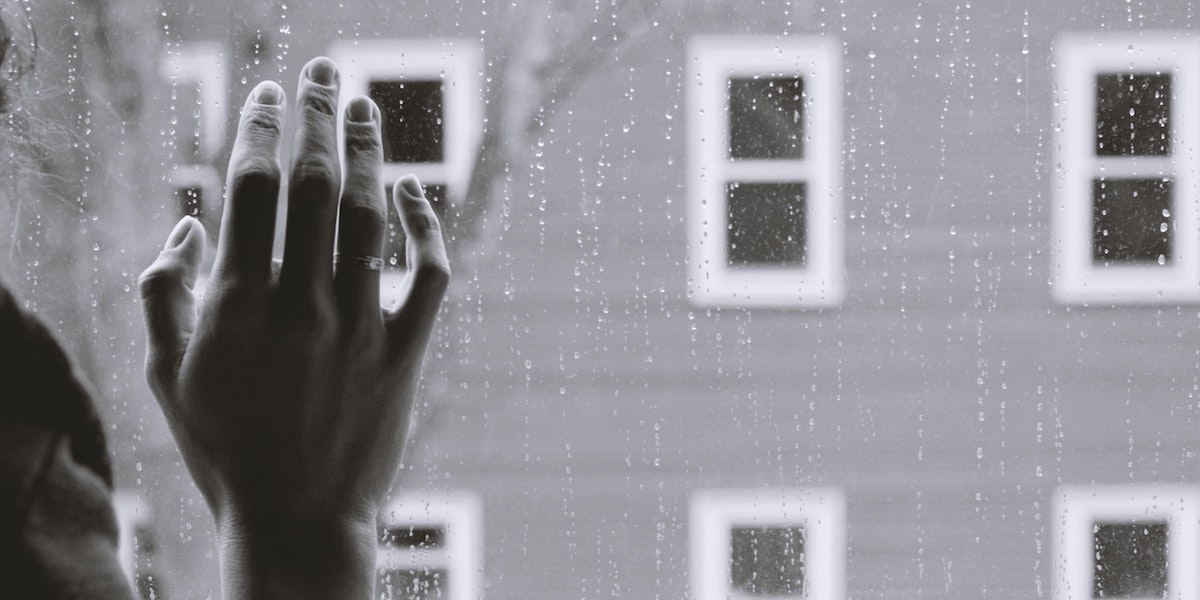Scott Barry Kaufman, PhD is a humanistic psychologist who has taught at Columbia University, the University of Pennsylvania, NYU, and elsewhere. He writes the column Beautiful Minds for Scientific American and hosts The Psychology Podcast, which has received more than 10 million downloads.
In his latest book Transcend: The New Science of Self-Actualization, Scott reveals a bold reimagining of Maslow’s famous hierarchy of needs and insights for realizing your full potential and living your most creative, fulfilled, and connected life. Transcend was recently selected as a Next Big Idea Club Finalist, and we’re proud to present an excerpt below.
The need for connection—to form and maintain at least a minimal number of positive, stable, intimate relationships—is a fundamental need that affects our whole being, permeating our entire suite of emotions, thoughts, and behaviors. While individuals differ in the strength of this need, connection is an irreducible, undeniable human need. The need for connection actually consists of two subneeds: (a) The need to belong, to be liked, to be accepted, and (b) The need for intimacy, for mutuality, for relatedness.
While these two subneeds are often treated synonymously in the psychological literature, I believe they are also worth teasing apart since they can diverge in important ways, with important implications for health and growth.
The Need for Belonging
When one feels belonging, one feels accepted and seen, and when one is deprived of belonging, one feels rejected and invisible. These emotions stem from a deeply evolved social protection system that clearly had important survival and reproduction functions during the course of human evolution. Strong affiliations among small-group tribe members throughout history offered greater resources, information, and cooperation to overcome stress and threat. Since we are intensely social animals, the need to seek at least a minimal amount of acceptance while avoiding complete rejection is vitally important for gaining social rewards in virtually all social situations—from social influence to social support to group membership to acquaintances to friendships to romantic relationships.
“40 percent of adults say they are lonely, with approximately 42.6 million adults over the age of forty-five reporting chronic loneliness.”
It makes sense that evolution would endow us with an exquisitely sensitive social protection system that continually tracks our levels of belonging, detects threats to acceptance, and warns us (through incredibly painful emotions) whether the perceived threat is high and whether exclusion and ostracism are possible. It is perfectly normal for perceived signs of rejection to trigger uncomfortable emotions, such as hurt feelings, jealousy, and sadness, as well as increased attention and focus on solving the problem.
In times of relative safety, the need for belonging may not be as essential as in times of increased perceived instability and danger in the environment, when the social protection system is most likely to become activated and exert its effects. For instance, under such circumstances, individuals increasingly identify with specific groups, often to the exclusion of other groups.
Independent of societal conditions, however, people differ greatly from one another in their need for belonging, as a result of a multitude of individual genes intricately interacting with personal experiences.
Loneliness Kills
A recent survey suggests that 40 percent of adults say they are lonely, with approximately 42.6 million adults over the age of forty-five reporting chronic loneliness. In his book Loneliness: Human Nature and the Need for Social Connection, social psychologist John Cacioppo reports that “social isolation has an impact on health comparable to the effect of high blood pressure, lack of exercise, obesity or smoking.”
Loneliness is not making us just temporarily ill; it is literally killing us. One study found that the feeling of loneliness, social isolation, or living alone increases the risk of death by 26 percent, 29 percent, and 32 percent, respectively. Those with a subjective feeling of loneliness as well as an objective separation from others face the greatest risk of mortality. Loneliness poses a risk of mortality comparable to that of smoking and double that of obesity, and elderly individuals and those without adequate social interaction are twice as likely to die prematurely.
“Loneliness poses a risk of mortality comparable to that of smoking and double that of obesity.”
No human being is exempt from the dire consequences of loneliness, and no other basic human need satisfaction can substitute for a deep connection—not money, not fame, not power, not popularity, not even belonging and acceptance—even though we often seek one or another of these other routes in the false hope that they will fully satisfy our need for connection. As Leo Braudy notes in his extensive review of the history of the quest for fame, the desire for fame is often based on a “dream of acceptance” that includes the notion that becoming famous will make the person feel loved, accepted, and sought after by others for the rest of their lives.
As many people who have actually achieved fame can attest, though, the dream is often very illusory and even when achieved, fame remains deeply unsatisfying. While the two motives do seem to inhabit completely different ways of being, in a well-known 1962 essay called “Love and Power” in Commentary magazine, the political scientist Hans Morgenthau argues that love and power are actually united in a common motive: the striving to escape loneliness. According to Morgenthau, power and love offer very different strategies for achieving the same goal: “Love is reunion through spontaneous mutuality, power seeks to create union through unilateral imposition.”
But as Morgenthau notes, power is a deeply unsatisfying substitute for intimacy: “Yet of what love can at least approximate and in a fleeting moment actually achieve, power can only give the illusion.” The same also applies to the quest for fame. An implication, according to Morgenthau, is that the quest for power, in an attempt to make oneself whole, always inevitably makes one want even more power. One consequence is the deep irony that the most powerful people tend to be the loneliest. As Morgenthau notes, this helps explain the need for continuous demands to be referred to as “our beloved leader” among those with the greatest thirst for power (e.g., Stalin, Hitler).
Loneliness may be part of the cause of celebrity suicides. As Cacioppo notes, “Millionaires, billionaires, tend to feel lonely. A lot of athletes often feel lonely. Lots of people want to be their friend, but how would you feel if all the people who want to be your friend, you had the alternative interpretation that they want material or social benefits that you could give them.”
“Power is a deeply unsatisfying substitute for intimacy.”
What has gone so wrong in our society that loneliness is so rampant? For one, there is a stigma against admitting loneliness and a taboo against openly wanting to make new, close friends. But this is just one part of a larger picture. “We are doing things that are just so unnatural with regards to our need for social connection, and then we wonder why we’re not feeling connected,” observes Emma Seppälä, science director at the Center for Compassion and Altruism Research and Education at Stanford University. Seppälä continues:
The way we are prioritizing our life, and what we are prioritizing, often goes against our greatest need for belonging. Whether it’s material goods or pleasures, financial advancement, or social advancement, we’re missing the point completely. We’re not seeing that our greatest happiness comes from connection, whether from family or religious or social community, something greater than yourself, something transcendental. We are so lost and there’s a reason why so many people feel lost and anxious and depressed and lonely.
Research shows that those who report the highest levels of loneliness are those who have the highest unmet need to belong. The greater the discrepancy between a person’s need to belong and their satisfaction with their personal relationships, the higher the levels of loneliness and the lower the levels of life satisfaction in their daily lives. This finding applies both to those who are living alone as well as those who are living with others. Simply living with someone does not guarantee that connection needs are being met. It’s the quality of the connections that matter for predicting loneliness, not the quantity of connections or even the proximity of the connections.
The Biology of High-Quality Connections
The biology of the modern brain reflects the evolutionary heritage of this fundamental need. When we have a high-quality connection that gets us in tune with another human being—whether it’s confiding in a vulnerability to someone, gossiping about a common enemy, or sharing simple moments of laughter and joy—our “calm-and-connect” system comes alive. This system involves a suite of biological responses that work together to intensify a deep connection with another human being. In such moments of “positivity resonance”—as psychologist Barbara Fredrickson puts it—one person’s brain literally syncs up with the other person’s brain, a phenomenon sometimes referred to as “neural coupling.” Partners experience an enhanced ability to anticipate the other’s stream of thought and to feel the same emotions, sometimes even physically feeling their pain. As Fredrickson notes, such “micro-moments of connection” are “tiny engines” that can set off upward spirals in your life, helping you to grow and become a better version of yourself. The brain’s opioid system is a key player in increasing connection. While the opioid system is not specific to social connection—in fact, the opioid system is really the “pleasure system”—it just so happens that social connections provide the most important and dramatic experiences of pleasure in our lives most of the time. During heightened social connection, the opioid system downregulates the HPA axis, dampening the body’s response to stress. The opioid system is also involved in feelings of loss and grief when a social bond is lost. The opioid system is so integral to the connection system that one prominent team of neuroscientists deemed strong social connections “in some fundamental neurochemical sense opioid addictions.”
“Connection (and lack of connection) clearly have powerful effects on our brain and physiology, with deep implications for our mental and physical health.”
Another key player in the connection system is the neuropeptide oxytocin. Oxytocin is produced in the hypothalamus and functions both as a hormone and as a neurotransmitter. There is some evidence that oxytocin increases the willingness to trust and cooperate, while also enhancing the ability to discern cues of trust and goodness in others. Oxytocin is also part of the calm-and-connect system; it dials down the sensitivity to threats in specific parts of the amygdala, downregulating feelings of distress and fear.
While some researchers have referred to oxytocin as the “love hormone” or even the “cuddle hormone,” more recent research suggests that the effects of oxytocin on social behaviors are highly dependent on context. Oxytocin increases in group favoritism, taking costly risks (including lying) to improve the welfare of your group, and conformity, trust, and cooperation for the in-group. However, oxytocin’s effect on trust is actually reduced when another person is perceived as untrustworthy, is unknown, or is a member of an out-group that has conflicting views and values from the in-group. When the in-group and out-group have similar views and values, oxytocin doesn’t seem to show this in-group bias.
Therefore, while oxytocin does help strengthen connections with others and is a key player in the calm-and-connect system, it is becoming increasingly clear that oxytocin is not the “universal love hormone.” It might be more accurate to think of oxytocin as the “in-group love hormone.” For this reason, in the new integrated hierarchy of needs I present in Transcend, I clearly distinguish between the need for connection and the need to give unconditional love that can operate independently of the connection you feel with someone.
Yet another key player in the connection system is the tenth cranial nerve, also known as the “vagus nerve.” The vagus nerve emerges from the brain stem deep within the skull and connects the brain to many organs, including the heart and lungs. The vagus nerve soothes a racing heart, encourages eye contact with another person, and synchronizes facial expressions. The strength of the vagus nerve—referred to as “vagal tone”—can be reliably measured; it is associated with physical, mental, and social flexibility, and the ability to adapt to stress. Those with higher vagal tone experience greater connection with others in their daily lives, and in turn, this greater connection increases vagal tone, causing “upward spirals of the heart.”
Connection (and lack of connection) clearly have powerful effects on our brain and physiology, with deep implications for our mental and physical health. In fact, they can be matters of life and death.





























